

When making napkins, you have endless fabric options to choose from. Most fabrics will work well while a few won’t. While it’s totally okay to experiment with different kinds of options available, knowing which ones to use or avoid beforehand can save you money and other resources. After all, you won’t need to wait until after you’ve started making a napkin to realize the fabric doesn’t work.
Below we look at the best fabrics for napkins. Notably, what you intend to use the napkin for also matters. Some work best for dinner napkins, while others produce high-quality cocktail napkins. There are also fabrics for everyday and decorative napkins. As such, you can pick one or a couple, depending on what you intend to use it for.
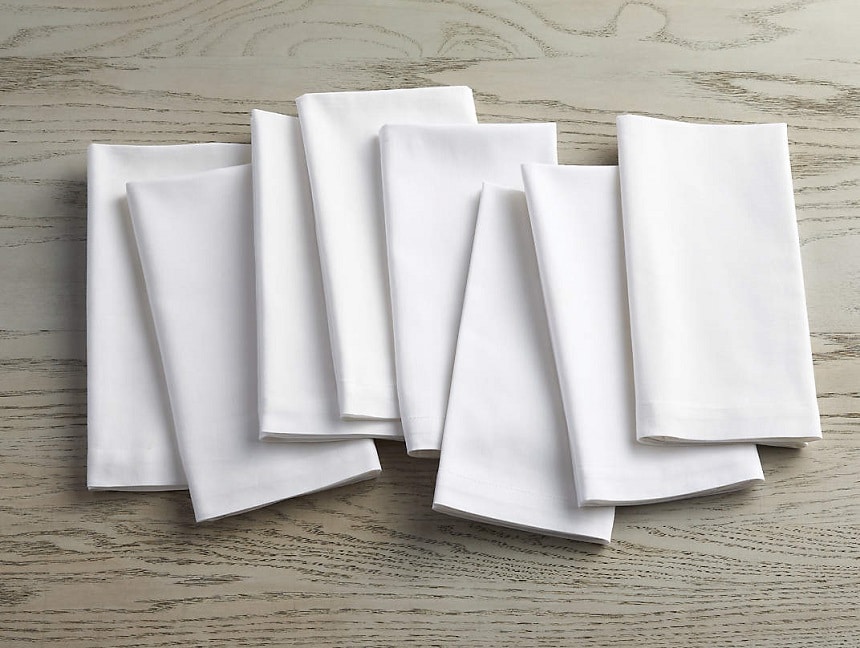
Although the fabrics you encounter will be different, you can gauge their aptitude for the job by checking for various attributes. One example is that they should be absorbent. The major function of napkins is wiping off liquids in the form of beverages and even sauces from the table. As such, if the fabric is not absorbent enough, the napkin will fail miserably at its job.
Next, the fabric should be durable and strong. In terms of strength, you don’t want a napkin that rips easily as it will have a very short life. Where durability is concerned, you want a napkin that holds up to constant use and abuse. It should maintain its structure and integrity through wiping sauces, liquids, being washed regularly, and more.
Also, check for aesthetic value. Nobody wants to use an ugly napkin. Consequently, if you use ugly-looking fabrics, you’ll likely never bring yourself to place the napkins on your table or use them. Lastly, the fabric should be easy to work with. Some can be difficult to handle, and this will only make fashioning the napkin more challenging for you. However, if the material takes well to needles, sewing machines and doesn’t stretch unevenly, you’ll breeze through the process of making the napkins.
Here are some types of fabric that you should consider.
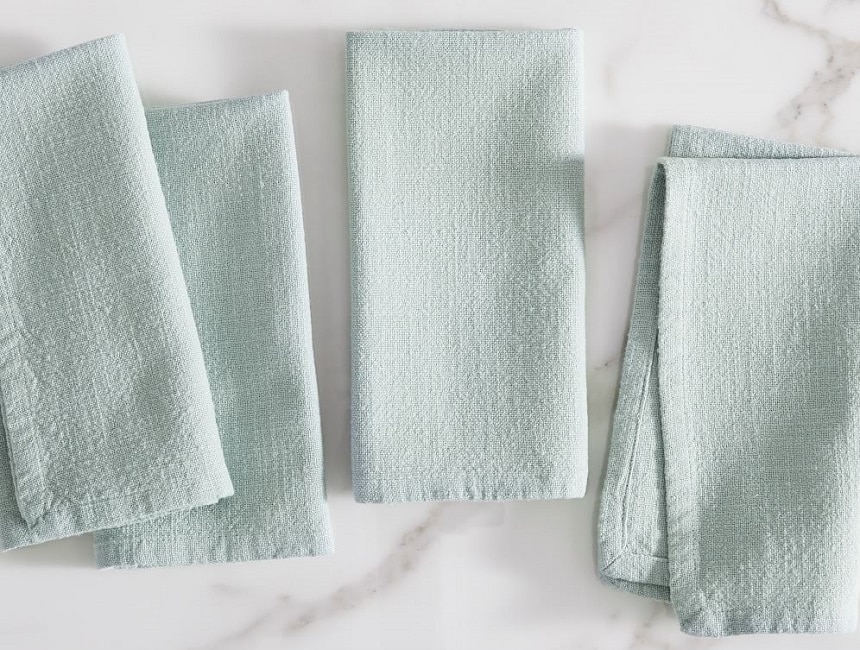
This is a relatively popular napkin-making material, although you should note that there are different variations and types of cotton. However, it has a reputation for being strong enough to resist tearing for a while. Additionally, it’s durable enough to withstand wiping down tables and regular cleaning, all while maintaining some degree of softness in the long run. Lastly, you’ll have multiple colors and designs to pick from.
One of the most popular cotton fabrics for napkins, according to reviews, is the Moon & Stars Twinkle Flannel option. It is 100% pure cotton, and the design features both stars and text. It, therefore, makes a good option for a family table setup.
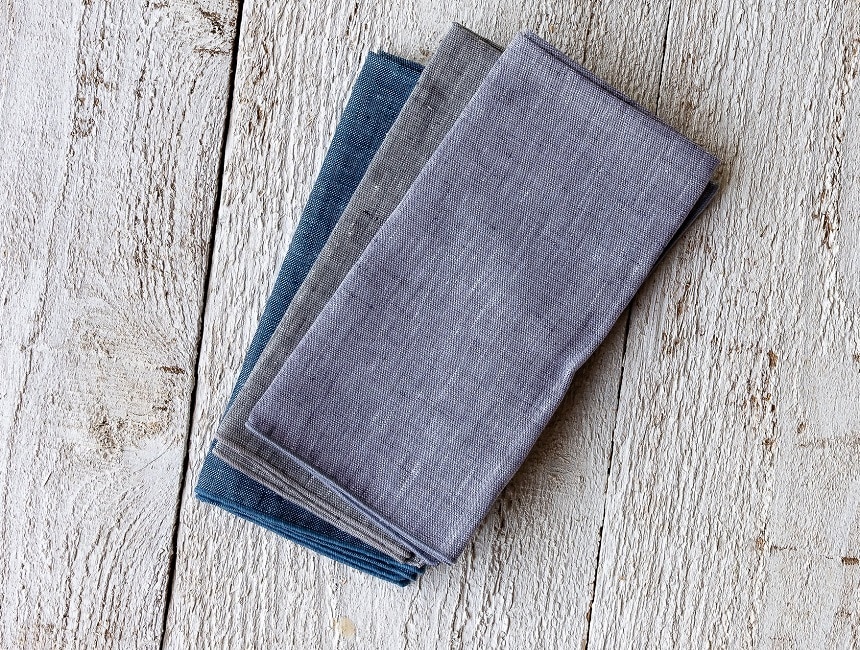
Although fairly expensive, linen makes for a pretty good napkin material. Its softness and durability are two of its best attributes. Additionally, it will look good on any table. However, if you’re going to make linen fabrics ensure you don’t tumble them dry after a wash; otherwise, you’ll leave the material with permanent creases. This will then reduce the aesthetic value of the napkins.
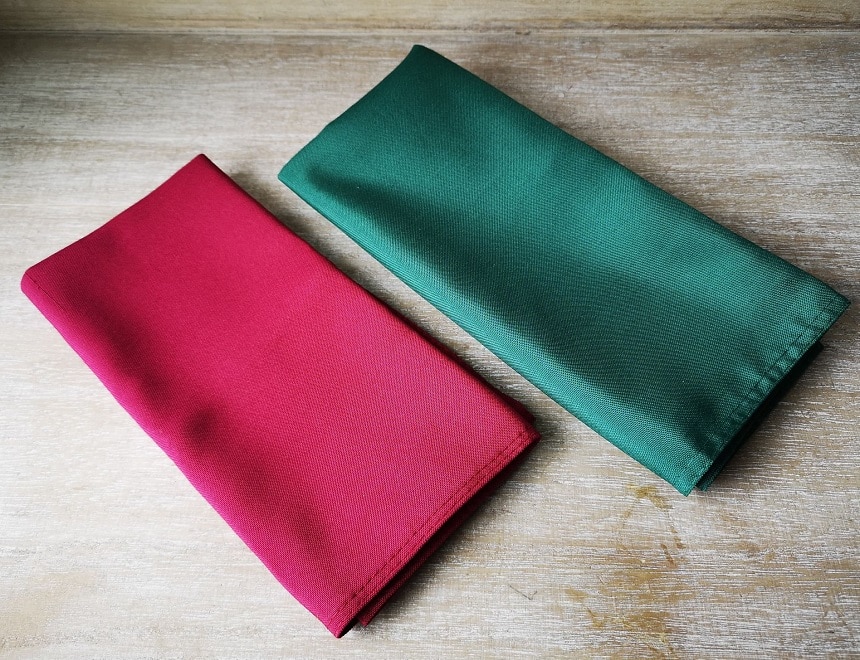
Another contender for the best fabric for table napkins is polyester. As a synthetic fabric, polyester doesn’t disappoint when used to make napkins. Unlike linen, polyester rarely ever wrinkles. Additionally, it should be available in just as many colors and designs as cotton, if not more. As such, you can make the napkins to fit different occasions, holidays, and times of the year. Another positive is that polyester fabrics rarely fade or shrink even with frequent use. However, one major problem is that they stain pretty easily.
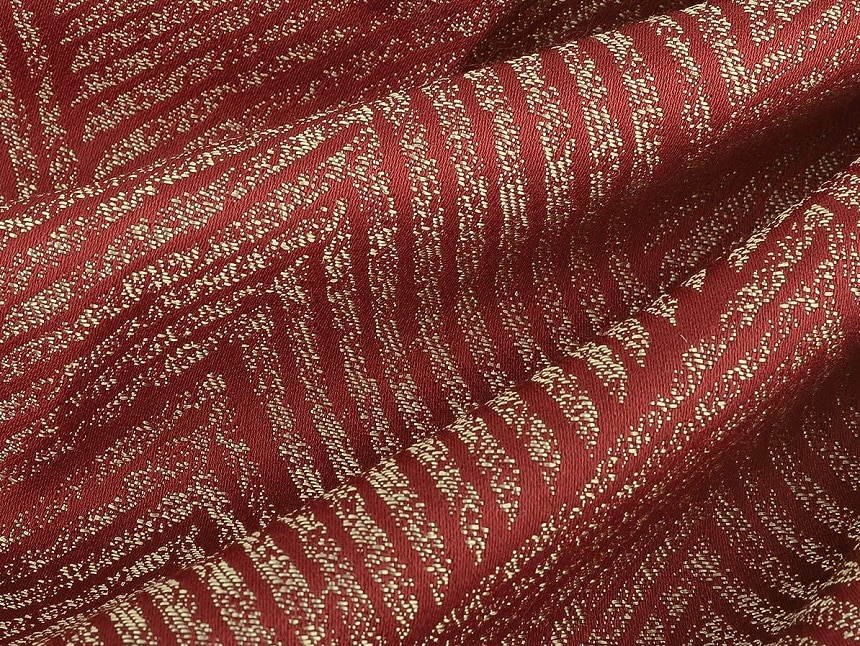
As implied by the name, poly-cotton is a blend of cotton and polyester. It, therefore, shares the best features of both worlds. This means multiple design and color options. Furthermore, it combines the softness of cotton with polyester’s best attribute, which is the additional strength and durability.
According to users, the Richcheck Gingham from Richland Textiles is an excellent poly-cotton blend for napkins. The polyester components make up 65% of the fabric, while the cotton takes up the rest. Also, the term Gingham should tell you that the material is already patterned.

Comparatively, bamboo fabric is the most eco-friendly material you can pick to make your napkins. Aside from that, its durability and ability to absorb spills are worth some praise. Lastly, this fabric is also hypoallergenic, making it the go-to option if some of the individuals in your household are prone to allergic reactions.
We mentioned before that the intended use of the napkins is a crucial factor in determining the type of fabric that you should pick. Below we look at the various uses and the fabrics that are the best match. That said, most fabrics are quite versatile and will work for a variety of use scenarios.
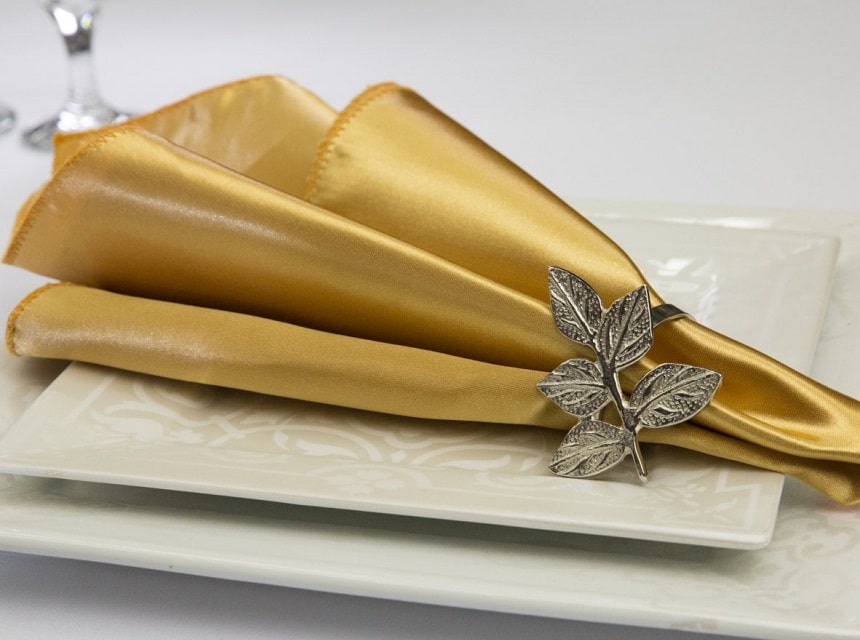
With dinner napkins, you should be able to add either a touch of class to the dinner table or a pop of color to mix and match your setup. Either way, the fabric you choose has to satisfy certain conditions. For example, it should be durable to cater to daily use and multiple washes in a week. Additionally, it should look good on your table hence why the colors and design are essential.
Consequently, the best fabrics for dinner napkins are cotton, polyester, linen, and bamboo fabric. With these, you have the leeway to throw them in a washer as often as you need to.
It’s also possible to use silk fabrics as well as sateen. You’ll notice that we didn’t mention these two materials in the section above, and with good reason. They look good but are expensive and prone to sun and water damage despite being great absorbers. As such, they don’t satisfy most of the criteria needed for dinner napkins. However, if you don’t mind that, you can opt to use them.
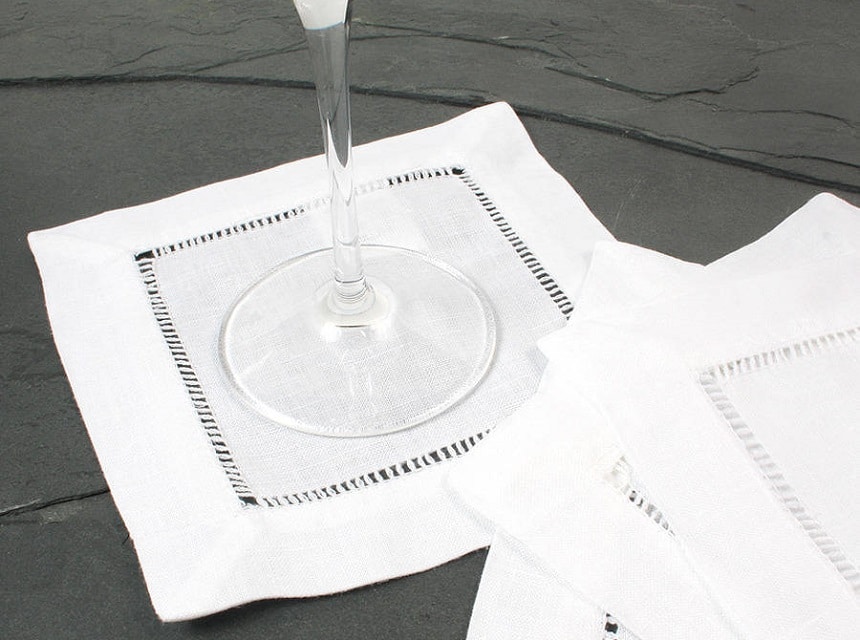
Cocktail napkins also require you to think carefully about your fabric options. Remember that with cocktail hour comes an increased risk for spills. After all, once people start to get tipsy, they’re not very careful with the glasses. As such, a high absorbency rate is the first thing to look for in a fabric for a cocktail napkin.
Additionally, cocktails come in many different colors, and the occasions to serve them are numerous as well. Therefore, a fabric option where you can pick from multiple designs and colors will also work well as it allows you to match the beverages and occasions whenever you need to. Next, these are napkins that will be wiping spills frequently, and hence being easy to clean should come in handy. Lastly, they should be fade-resistant, considering how often they’ll need to be cleaned.
Linen and cotton are two commonly used materials for the job, and it’s easy to see why. They are excellent absorbers, and the color/design options are many.
You’ll occasionally find some people using polyester and other synthetics since they hardly ever wrinkle, and they don’t have a problem retaining their colors. However, a downside is their susceptibility to staining, which makes cleaning them hard.
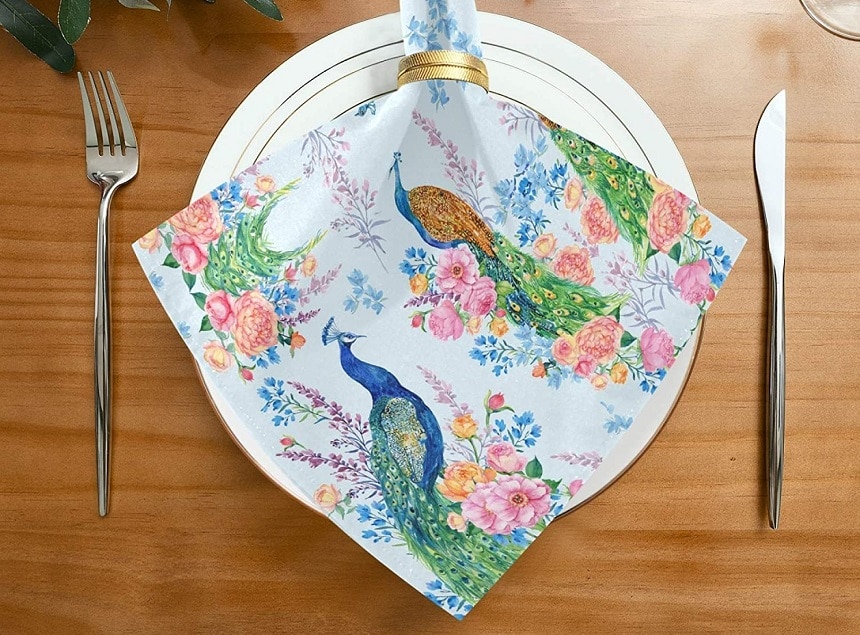
If you’re trying to make decorative napkins, the main function of the finished product will be to look good on a table rather than wipe spills. Consequently, this time the durability and how easy it is to clean may not matter much. However, the color and design options are significant factors. Cotton, linen, polyester all seem like viable solutions due to the endless colors and design options available.
If you pick polyester, you can keep these napkins for longer since they’re unlikely to lose color. You can also get away with using silk and sateen as long as you’re sure the napkins are only for decorative purposes. Ultimately you’ll have a lot of leeway for experimentation and can try as many fabrics as you can find.
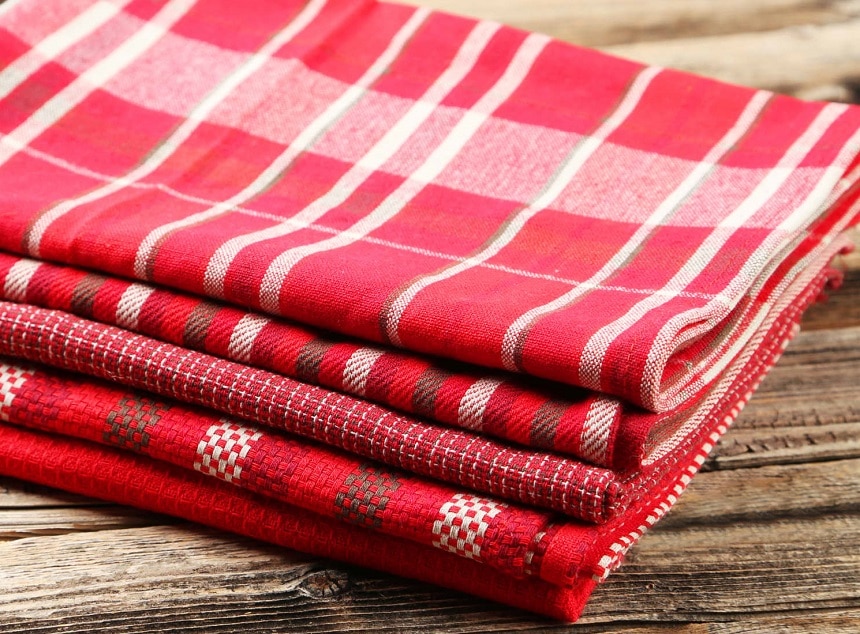
Just like for the dinner napkins, everyday napkins will receive lots of use and should be able to take the abuse. Of course, you can choose to match your crockery and table setup, thereby necessitating different color options. Consequently, it seems obvious that cotton would be a frontrunner for selection. It is available in a lot of designs and colors, and the absorbency is top-tier.
There’s no rule dictating how much fabric you should buy for your napkins. However, if you factor in your needs, you should be able to tell what size of the material is too big or too small. For starters, you should begin by determining the size of the napkins you intend to make.
After that, you decide how many napkins you need in total. For example, you can make eight napkins to match the number of seating positions on your dining table. If you’ve decided on eight 21” x 21” napkins from standard 45”-wide fabric, you will need 2 1/3 yards of fabric to complete your project.
Of course, the size of the fabric will increase if you add the size of the napkins or their number. However, you can do your calculations beforehand, so you have an easier time selecting the material at the store. Worth mentioning is that most stores don’t sell fabric in fractional sizes. Instead, they sell their materials by the yard.
In the above example, even if you only need 2 1/3 yards of fabric, you’ll have to round that off to 3 yards during purchase. As such, you’ll end up spending more money. That said, there are some benefits to this approach as well. The most obvious is that making your own napkins can be a process filled with mistakes. However, with extra fabric, you get a bit of leeway for the said mistakes, as you can discard bad parts and cut another piece for a napkin.
Additionally, the extra fabric helps cater to the seam allowance for the napkins, although it’ll likely only take up an additional 10% of the fabric. That said, you need to be extremely careful during the cutting and preparation process to avoid spoiling the fabric and going back to the store to buy new material as a result. Fabric cutting tables, fabric cutting machines, and even rotary cutters can add some accuracy to your cutting processes.
The write-up above shows there are many contenders for the title of best fabric for napkins. It also gives guidance on how to pick one material from the numerous options with your needs as a guide. However, there’s no rule against trying the different options at varying times if you’re an avid crafter. Over time you could even decide on some favorites once you’ve tried the different napkins out.